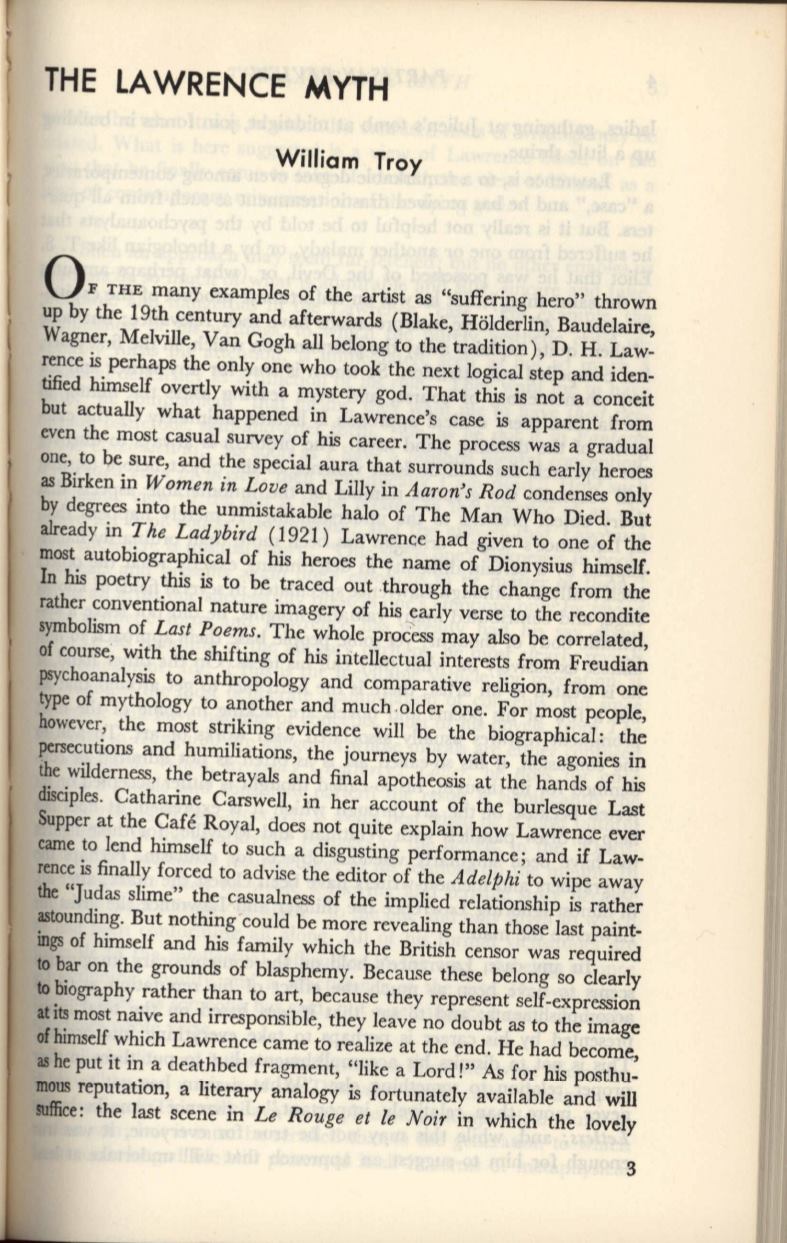
THE LAWRENCE
MYTH
WiJliam Troy
OF
THE
many examples of the artist as "suffering hero" thrown
up by the 19th century and afterwards (Blake, H6lderlin, Baudelaire,
Wagner, Melville, Van Gogh all belong to the tradition), D. H. Law-
rence is perhaps the only one who took the next logical step and iden-
tified himself overtly with a mystery god. That this is not a conceit
but actually what happened in Lawrence's case is apparent from
even the most casual survey of his career. The process was a gradual
one, to Qe sure, and the special aura that surrounds such early heroes
asBirken in
Women in Love
and Lilly in
Aaron's Rod
condenses only
by degrees into the unmistakable halo of The Man Who Died. But
already in
The Ladybird
(1921) Lawrence had given to one of the
most autobiographical of his heroes the name of Dionysius himself.
In his poetry this is to be traced out through the change from the
rather conventional nature imagery of his early verse to the recondite
symbolismof
Last Poems.
The whole pro2ess may also be correlated,
of course; with the shifting of his intellectual interests from Freudian
psychoanalysis to anthropology and comparative religion, from one
type of mythology to another and much ·older one. For most people,
however, the most striking evidence will be the biographical: the
persecutions and humiliations, the journeys by water, the agonies in
the wilderness, the betrayals and final apotheosis at the hands of his
disciples.Catharine Carswell, in her account of the burlesque Last
Supper at the Cafe Royal, does not quite explain how Lawrence ever
cameto lend himself to such a disgusting performance; and if Law-
renceis finally forced to advise the editor of the
Adelphi
to wipe away
the "Judas slime" the casualness of the implied relationship is rather
astounding.But nothing could be more revealing than those last paint-
ings of himself and his family which the British censor was required
to bar on the grounds of blasphemy. Because these belong so clearly
tobiography rather than to art, because they represent self-expression
at itsmost naive and irresponsible, they leave no doubt as to the image
ofhimselfwhich Lawrence came to realize at the end. He had become,
ashe put it in a deathbed fragment, "like a Lord
1"
As for his posthu-
mousreputation, a literary analogy is fortunately available and will
IUffice:the last scene in
Le Rouge et le Noir
in which the lovely
3


